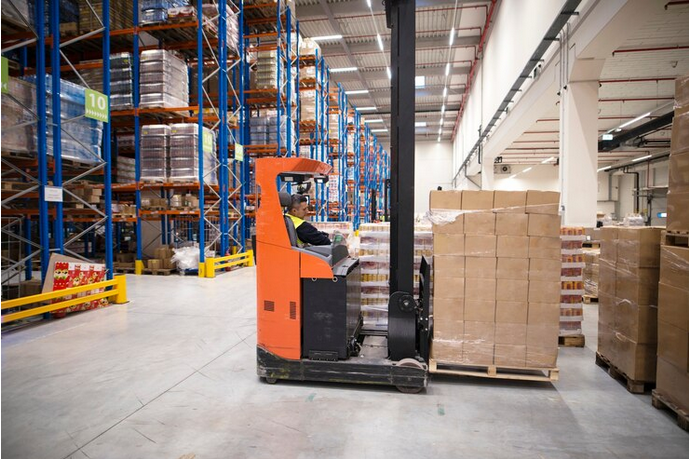Efficient warehouse management is a cornerstone of success in the modern business landscape, and at the heart of this efficiency lies the strategic implementation of pallet racking systems. These systems play a pivotal role in optimizing storage, streamlining operations, and enhancing overall productivity. In this comprehensive overview, we will unravel the complexities of warehouse pallet racking systems, providing insights into key considerations, types, benefits, and best practices to demystify this critical component of warehouse logistics.
Understanding Warehouse Pallet Racking Systems
Warehouse pallet racking is a sophisticated storage solution designed to maximize space utilization and streamline the handling of goods. At its core, pallet racking involves the arrangement of pallets on shelves or racks, enabling efficient use of vertical space within a warehouse. This systematic approach not only organizes inventory but also facilitates easy retrieval, contributing to a well-organized and functional warehouse.
Key Considerations for Pallet Racking Systems
Warehouse Layout and Design: The foundation of an efficient warehouse pallet racking system lies in a well-thought-out warehouse layout. Elements such as aisle width, available space, and the nature of products stored should be meticulously considered. A strategic layout minimizes bottlenecks and optimizes the flow of goods.
- Product Characteristics: Tailoring pallet racking to the characteristics of the stored products is paramount. The size, weight, and nature of the goods impact the choice between different racking systems. This customization ensures both the safety of the inventory and the efficiency of the storage solution.
- Accessibility Requirements: Understanding the frequency of product access is crucial for selecting the appropriate pallet racking system. Whether it's selective racking for high accessibility, drive-in racking for high-density storage, or double-deep racking for a balance between density and accessibility, aligning the system with access needs is essential.
Types of Pallet Racking Systems
- Selective Pallet Racking: This widely used system provides direct access to each pallet, making it ideal for warehouses with a diverse range of products. While it maximizes accessibility, it may have lower storage density compared to other systems.
- Drive-In Pallet Racking: Designed for high-density storage with a low number of SKU (stock-keeping unit) counts, drive-in racking allows forklifts to drive directly into the racks. This maximizes storage density but restricts accessibility.
- Double-Deep Pallet Racking: Offering a compromise between density and accessibility, double-deep racking allows pallets to be stored two deep. This system doubles storage capacity compared to selective racking.
- Push-Back Pallet Racking: Ideal for first-in, last-out (FILO) inventory systems, push-back racking employs nested carts on inclined rails. This maximizes storage density while maintaining accessibility and a relatively simple loading and unloading process.
Benefits of Efficient Pallet Racking Systems
- Optimized Space Utilization: Pallet racking systems unlock the vertical space in a warehouse, significantly increasing storage capacity without expanding the physical footprint. This is particularly valuable in areas where real estate is limited.
- Improved Accessibility and Visibility: A well-designed pallet racking system ensures easy access to products, reducing the time spent searching for items. Enhanced visibility contributes to efficient inventory management and order fulfillment.
- Enhanced Safety Standards: The structured storage provided by pallet racking minimizes the risk of accidents. Organized aisles and secure pallet placements contribute to a safer working environment for warehouse staff.
- Streamlined Order Fulfillment: Efficient pallet racking facilitates faster and more accurate order picking, reducing lead times and improving overall customer satisfaction. This is particularly critical in the era of e-commerce, where quick turnaround times are expected.
Best Practices for Maximizing Efficiency
- Regular Maintenance and Inspections: Implementing a routine maintenance schedule and conducting regular inspections are crucial for identifying and addressing potential issues promptly. This helps prevent structural problems and ensures the longevity of the pallet racking system.
- Utilize Vertical Space Effectively: Embracing the vertical dimension by utilizing tall pallet racking structures is a key strategy. This not only maximizes storage capacity but also minimizes the need for horizontal expansion, which can be cost-prohibitive.
- Implement FIFO Inventory Management: For businesses dealing with perishable or time-sensitive goods, adopting a first-in, first-out (FIFO) inventory management system is essential. This approach ensures that older products are used or shipped first, minimizing waste and maintaining product quality.
- Invest in Technology: Leveraging technology, such as Warehouse Management Systems (WMS) and Radio-Frequency Identification (RFID), can significantly enhance efficiency. These technologies optimize inventory control, order processing, and overall warehouse operations.
Conclusion
In the intricate tapestry of warehouse management, understanding and implementing efficient pallet racking systems are fundamental threads. By unraveling the complexities, addressing key considerations, exploring various types, and embracing best practices, businesses can not only optimize storage but also create a dynamic and responsive warehouse ecosystem. Demystifying warehouse pallet racking systems is not just about organizing inventory; it's about unlocking the full potential of a warehouse to drive efficiency, reduce costs, and ultimately contribute to the overall success of the supply chain.





Comments